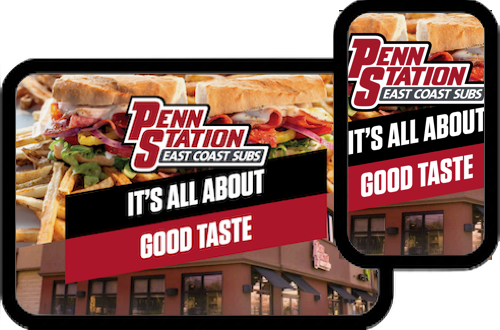You can nail the menu and still lose the day to messy operations. In a sector expected to reach $1.5 trillion in U.S. sales this year, small execution gaps may compound into system-wide drag.
This playbook identifies the five most common mistakes in restaurant franchise operations and provides precise solutions that operators can implement without slowing down the line.

Mistake #1 – No standardized operations manual
Ambiguity breeds inconsistency. When the same task is handled five different ways across five separate locations, quality control in food franchises breaks down, which can lead to rising costs.
The International Franchise Association calls the operations manual “a toolkit” that documents requirements and procedures for both franchisors and franchisees. This toolkit serves as the backbone of franchisee and franchisor responsibilities, enforcing brand integrity across units.
To help maintain consistency and ensure your franchise thrives, treat your SOP as a living document. Build a versioned, searchable manual with role-specific checklists and short micro-videos. Be sure to include:
- Food franchise SOPs for opening, peak, and closing (line checks, holding times, sanitation cycles).
- Create a table and build charts with weights and photos to ensure consistency across franchise locations.
- Service standards tied to ticket-time targets and guest recovery scripts.
- The daily manager walks through routines, verifying initials and timestamps.
Why it matters: Standard operating procedures reduce variability and increase speed without stifling service nuance — a point long observed in operations literature that is considered a best practice for franchises.
Mistake #2 – Inconsistent staff training across locations
Uneven onboarding leads to uneven execution. With accommodation and food services posting the highest annual total separation rate among major U.S. industries in 2024, operators must anticipate churn and design training to foster resilience.
Restaurant franchise operations management is effective when training is simple, repeatable, and measurable.
To optimize efficiency, deploy a system-wide training ladder with certification points assigned to each station, and then audit it.
- Use short learning sprints and line-side drills before each daypart.
- Cross-train on at least two stations to reduce labor scheduling and turnover pain during callouts.
- Require retraining after menu changes or quality misses and document sign-offs in your LMS.
- Run quarterly mystery shops and calibration cooks, then close the loop in shift huddles.
Taken together, it is clear that the fastest way to stabilize performance is to stabilize the training inputs. Measure completions and station-level proficiency, not just attendance.
Get to know the first steps:
Mistake #3 – Weak operational planning for new units
Rushed openings can strain both teams and cash. Common misses include late procurement, incomplete permits, and no pre-open stress tests. In an industry that’s adding jobs and competing for traffic, new units need a documented restaurant franchise operational plan that tracks progress and prevents scope creep.
Fix: Build a stage-gated pre-open plan with clear exit criteria:
- Site and design: Lock in the layout early, confirm utilities, and finalize equipment specifications with lead times.
- People: Hire by station. Sequence orientation, ServSafe-equivalent certification, and soft opens are key.
- Menu readiness: Validate yields and throughput with two full-capacity mock services.
- Vendors: Dual-source critical SKUs and document substitutions to protect quality control in food franchises.
- Finance: Establish a cash buffer for four payroll cycles and a targeted local marketing ramp.
With a written, time-phased operations plan, you can minimize change orders and reduce chaos during the opening week.
Mistake #4 – Lack of tech integration in daily operations
Manual workarounds slow growth. Guests increasingly expect seamless digital ordering and speed. In 2024, quick-service brands accelerated the adoption of self-serve kiosks, with research citing strong customer preference for kiosk or online ordering, and large chains piloted voice-driven AI in drive-thru lanes to remove friction.
To optimize operations, map the system and eliminate duplicate entries.
- Integrate POS, online ordering, loyalty, and kitchen display so that tickets flow without rekeying.
- Adopt scheduling and timekeeping that forecast against sales and labor targets to reduce overtime.
- Utilize a mobile “restaurant ops checklist” app for opening and closing, as well as temperature logs, to enhance compliance and food safety.
- Pilot kiosks where lines form, then conduct an A/B test of menu design for higher attachment rates.
Summarized in an analogy, think of technology as the expo in a busy kitchen, not the meal on the plate. Technology should ideally route orders and clear bottlenecks, allowing crews to cook and serve efficiently.
Mistake #5 – Overlooking customer experience in ops decisions
Crafting a process without focusing on guests often creates hidden costs. Off-premise now dominates limited-service traffic, which pushes speed, accuracy, and packaging into core ops decisions.
Recent consumer analysis tied to the industry’s annual outlook found takeout to be a cultural norm, with the majority of quick-service orders consumed off-premises, and speed ranked as a top driver of choice.
To alleviate this, make “customer effort” a KPI alongside food cost and labor.
- Measure order lead time by channel and set red/yellow/green thresholds per menu item.
- Design pickup shelves and drive-thru staging to eliminate cross-traffic and redundant work.
- Standardize packaging specs for hold time and transport integrity.
- Close the loop with loyalty offers after service recovery to retain guests.
Two bonus mistakes operators underestimate → and how to avoid them
- Vendor and supply chain drift: Substitutions can subtly creep in and erode taste. Keep approved vendor lists tight and monitor commodity volatility. Track USDA’s food price outlook to anticipate input shifts and build menu guardrails, then pressure-test margins during tariff or logistics shocks.
- Compliance and food safety gaps: Without disciplined logs and corrective actions, minor oversights can quickly escalate into major incidents. Align procedures with the 2022 FDA Food Code, digitize temperature checks, and audit corrective actions monthly.
A simple restaurant franchise operations checklist
- Daily: line check with hold times, sanitizer titration, oven/fryer calibration, waste log, pre-shift huddle with sales and labor plan.
- Weekly: inventory and variance review, top-5 prep yields, guest feedback scan, training refresh on one SOP, facility walkthrough.
- Monthly: P&L review, labor schedule audit vs forecast, vendor price verification, safety drill, customer experience spot checks by channel.
- Quarterly: menu engineering update, equipment PM, crisis tabletop, competitive set visit, franchisee advisory roundtable.
For a deeper understanding, also check the key responsibilities of franchises
Final thoughts: Turn mistakes into operational strengths
Restaurant chain management rewards systematic thinking. Document the work, train to the standard, integrate the tools, and measure what the guest feels to find equilibrium between multiple franchise locations – in other words, franchise operations planning in practice. The output is consistent food, faster lines, satisfied guests, and stronger teams.
Considering a brand with baked-in operations support?
If you want an alternative to building every system yourself, the Penn Station Sandwich Franchise operates on a simple, high-integrity menu that focuses on hot, grilled subs made to order, fresh-cut fries, and real, fresh-squeezed lemonade, all backed by a platform designed for consistency and speed.
Founded in 1985 by Jeff Osterfeld, the brand is now available at over 320 locations, emphasizing operational excellence, unit-level growth, proprietary recipes, and software that supports daily execution.
Support includes four weeks of franchisee training in Cincinnati, with both classroom and on-the-job components, as well as ongoing assistance with field operations, IT, online ordering, marketing, and financial reporting. Taken together, these pillars of support form a strong franchise foundation that directly addresses the five mistakes compiled above.
For diligence, review the expansion fit and investment requirements. We have major available territories across the Midwest, Mid‑Atlantic, and Southeast. Contact us now for more information.

